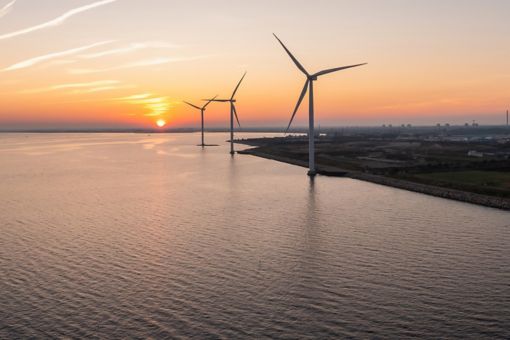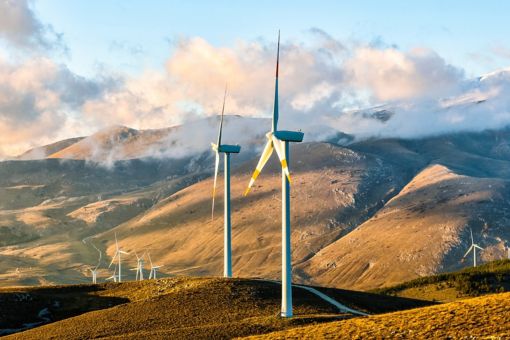Although President Trump's attitude may present challenges, the EU remains resolute in its pursuit of sustainability and can adapt its regulations to continue to pursue these goals. The transition to green energy is still becoming increasingly important as organizations navigate regulatory frameworks such as the Clean Industrial Deal, CSRD, or RED II, and national directives that mandate investment in renewable energy. With electricity generation accounting for 25% of global emissions, energy consumption is a key driver of an organization’s carbon footprint across the value chain.
To address this challenge, organizations are adopting decarbonization strategies such as energy sharing and peer-to-peer energy sales. These approaches enable organizations to utilize locally produced green energy, reduce CO₂ emissions, and advance long-term sustainability goals. Beyond the environmental benefits, energy sharing also fosters stronger community connections. For example, employees can sell surplus green energy back to their employer, creating a mutually beneficial model that supports both sustainability efforts and financial incentives for individuals.
This article explores the role of energy sharing in building a more sustainable energy strategy. We provide an overview of the concept, examine its benefits and challenges, and offer recommendations for policy improvements.
Why Energy Sharing?
Unlocking the full potential of energy sharing—or expanding its uptake—can bring significant benefits. These include increased use of renewable energy, lower energy costs, improved efficiency, enhanced grid resilience, empowered consumers and communities, and reduced carbon emissions. In the following sections, we first outline the different types of energy sharing before exploring the key challenges that need to be addressed to realize these benefits.

The four types of energy sharing and peer-to-peer sales in Belgium:

1. A) Energy sharing with a person or an organization
- Share self-produced green energy
- Goals: Cooperative partnerships / Cost reduction / Cost efficiency
- Share between employers and employees
B) Peer-to-peer selling with a person or organization
- Sell self-produced green energy
- Goals: make money / cost reduction
- Farmers sell their surplus (50%) to Proximus
- CHP surplus bought by state
A&B: Applicable only in the Flanders and Brussels regions

2. Energy sharing with yourself
- Sharing with 'yourself’, ‘shareholder', company, or (local) government
- Use self-generated green energy in all its residences, establishments, or buildings
- Goals: Energy optimization / Self-sufficiency / Cost-saving
- BEE (Belgian Eco Energy) does ‘smart energy sharing’ of its surplus with other sites or locations of the same industrial group
Applicable only in Flanders region

3. Energy sharing in a communal building
- Share self-generated green energy.
- With the residents of an apartment building or the users of a 'multi-purpose' building.
- Goals: Improve building efficiency; equitable energy distribution.
- Energy sharing in a building in Brussels using Sibelga’s energy-sharing solutions on request (condition: renewable energy).
Applicable in the Flanders, Brussels, and Walloon regions

4. Energy sharing in an energy community
- Energy community is a group of consumers (legal entity) -> energy together;
- 3 types of community: citizens; renewable, and local (Brussels only).
- Goals: Collective cost reduction / support local renewable projects.
- Alternating current: schools share locally their energy with residents and a company who purchase EUR 0.18/kWh (instead of 0.30).
Applicable in the Flanders, Brussels, and Walloon regions
There are several requirements to participate in energy sharing. Participation requires a digital meter that records data every 15 minutes and a contract with a commercial energy supplier to purchase electricity. Participants must operate within the same regional grid as their counterparts and, except for peer-to-peer sales, use only electricity from renewable sources. Energy sharing is not allowed for those for whom it is the primary commercial or professional activity.
The pricing mechanism allows consumers and producers to negotiate tariffs, allowing producers to sell or share excess energy rather than waste it, while consumers benefit from lower costs. However, the process is complicated by administrative charges from suppliers, grid charges (except under the Brussels special regime), and VAT (except for private individuals or small businesses). Moreover, the combination of multiple energy sharing mechanisms at different end points is not allowed. This brings us to the current pain points.
Common key challenges:
While the benefits of energy sharing are clear, there are several challenges that need to be addressed:
- Regulatory complexity: Regulatory frameworks are complex and vary across regions, limiting energy sharing to participants within the same grid operator's area, making cross-regional energy sharing impossible.
- Revenue uncertainty: For peer-to-peer selling, there is no guaranteed income, as renewable energy production is weather dependent, creating more uncertainty for both supplier and offtaker.
- Administrative fees: Energy suppliers charge administrative fees, which raise costs for both energy producers and consumers.
- Administrative burden & complexity: The high volume of administrative tasks required makes energy sharing unattractive when the financial benefits are limited.
- Lack of VAT incentives: The lack of VAT incentives makes energy sharing financially unattractive and difficult to implement.
- Grid fees: The imposition of grid fees adds another layer of complexity and contributes to the overall cost of energy sharing.
Conclusion and Policy Recommendations
Belgium is already making efforts to promote energy sharing, with recent coalition agreements in Flanders introducing VAT exemptions for energy sharing within the same building. Energy Minister Melissa Depraetere is also working to reduce administrative costs by automating processes with grid operator Fluvius (reference). Since 2022, it has been possible to share or sell excess solar energy, but high administrative fees from energy suppliers (up to EUR 150) often make it unprofitable. Efforts are underway to streamline these processes and make energy sharing more affordable and efficient, thereby supporting the transition to renewable energy. On top, small adjustments to the energy sharing policy are being considered at both the federal and regional level, with possible changes also being explored in Wallonia.
In addition to the changing Belgian legislation, the European Renewable Energy Directive (RED II) provides a framework for member states to promote renewable energy. Many countries are aligning their energy (sharing) policies with RED II by introducing financial incentives, such as fixed premiums per kWh directly consumed, reduced grid fees, or tax exemptions for consumption below certain thresholds. Some have also set-up central coordination offices to provide advice and support to help businesses navigate complex administrative processes. We recommend that Belgium follow suit by implementing similar incentives as outlined in the RED II Directive.
Energy Sharing in Belgium: key recommendations
Actions to fully unlock the potential of energy sharing in Belgium

In conclusion, while energy sharing offers significant benefits in terms of promoting renewables, reducing costs, and improving efficiency, regulatory complexity and other challenges still hinder its widespread adoption. However, some organizations are already successfully exploiting its benefits.
How KPMG can help
If your organization is looking for a comprehensive overview of energy sharing or needs expert advice on the tax, legal, or financial aspects involved, our KPMG Belgium team is here to help and to deliver sustainable value. Don’t hesitate to contact us for tailored, expert advice and ensure your energy-sharing initiatives are optimized and compliant.
Explore
Connect with us
- Find office locations kpmg.findOfficeLocations
- kpmg.emailUs
- Social media @ KPMG kpmg.socialMedia



